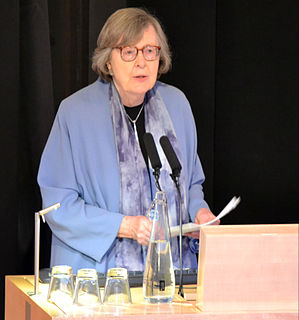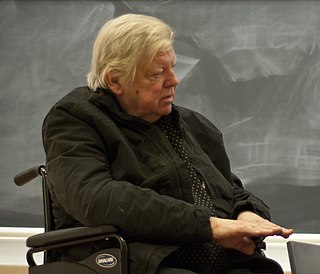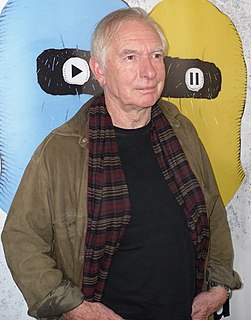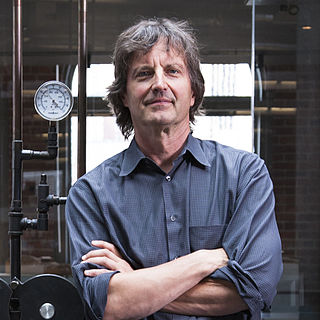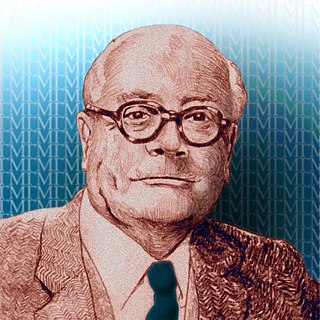A Quote by Penelope Lively
I have long been interested in landscape history, and when younger and more robust I used to do much tramping of the English landscape in search of ancient field systems, drove roads, indications of prehistoric settlement. Towns and cities, too, which always retain the ghost of their earlier incarnations beneath today's concrete and glass.
Related Quotes
I've always been interested, - if you look back at my work from the beginning, really - I've always been interested in the idea of the artificial landscape. Reforming the landscape. Architecture being a method of reforming the earth's surface. We reshape the earth's surface, from architecture to paving streets, to parking lots and buildings that are really reforming the surface of the earth. Reforming nature, taking over what we find. And we're mushing it around and remaking a new earth - or, what we used to call Terra Nova.
Living in Barcelona, I have my own little ghetto utopia. There are 3,000 ghost towns in Spain, and I've used the images of them a lot in my backdrops for my solo spoken-word stuff. The ghost towns could be from two buildings to 40 - things died out, or there were plagues, the roads don't lead there, whatever.
I love a chance to shoot real locations, because in films in the earlier days before people traveled as much, it was exotic to see a film set in Switzerland, and that area has been taken over by CGI, mostly, and fantasy landscapes. It's unusual to see this much landscape, people say it's old fashioned. So what you're referring to is there was that period in the '50s and '60s when there were epics and you saw landscape.
The pleasure a man gets from a landscape would [not] last long if he were convinced a priori that the forms and colors he sees are just forms and colors, that all structures in which they play a role are purely subjective and have no relation whatsoever to any meaningful order or totality, that they simply and necessarily express nothing....No walk through the landscape is necessary any longer; and thus the very concept of landscape as experienced by a pedestrian becomes meaningless and arbitrary. Landscape deteriorates altogether into landscaping.
I have always been interested in crafting films that use long, static urban landscape shots as a way of manipulating the emotions of the viewer and forcing them to slow down, which I think simultaneously makes them more vulnerable as spectators, and also puts them in a position of being more than just spectators.
The English landscape at its finest - such as I saw this morning - possesses a quality that the landscapes of other nations, however more superficially dramatic, inevitably fail to possess. It is, I believe, a quality that will mark out the English landscape to any objective observer as the most deeply satisfying in the world, and this quality is probably best summed up by the term 'greatness.'
Set in the remote and harsh high desert landscape of Idaho, Outpost is an artist live/work studio and sculpture garden for making and displaying art. An important aspect of the complex is the protected paradise garden, which is separated from the wild landscape by thick masonry walls. The materials used in the structure, including concrete block, car-decking, and plywood, require little to no maintenance, and are capable of withstanding the extreme weather that characterize the desert’s four seasons.
While the focus in the landscape of Old World cities was commonly government structures, churches, or the residences of rulers, the landscape and the skyline of American cities have boasted their hotels, department stores, office buildings, apartments, and skyscrapers. In this grandeur, Americans have expressed their Booster Pride, their hopes for visitors and new settlers, and customers, for thriving commerce and industry.
Adolescence has been recognised as a stage of human development since medieval times--long, long before the industrial revolution--and, as it is now, has long been seen as a phase which centers on the fusion of sexual and social maturity. Indeed, adolescence as a concept has as long a history as that of puberty, which is sometimes considered more concrete, and hence much easier to name and to recognize.
The world is moving into a phase when landscape design may well be recognized as the most comprehensive of the arts. Man creates around him an environment that is a projection into nature of his abstract ideas. It is only in the present century that the collective landscape has emerged as a social necessity. We are promoting a landscape art on a scale never conceived of in history.
